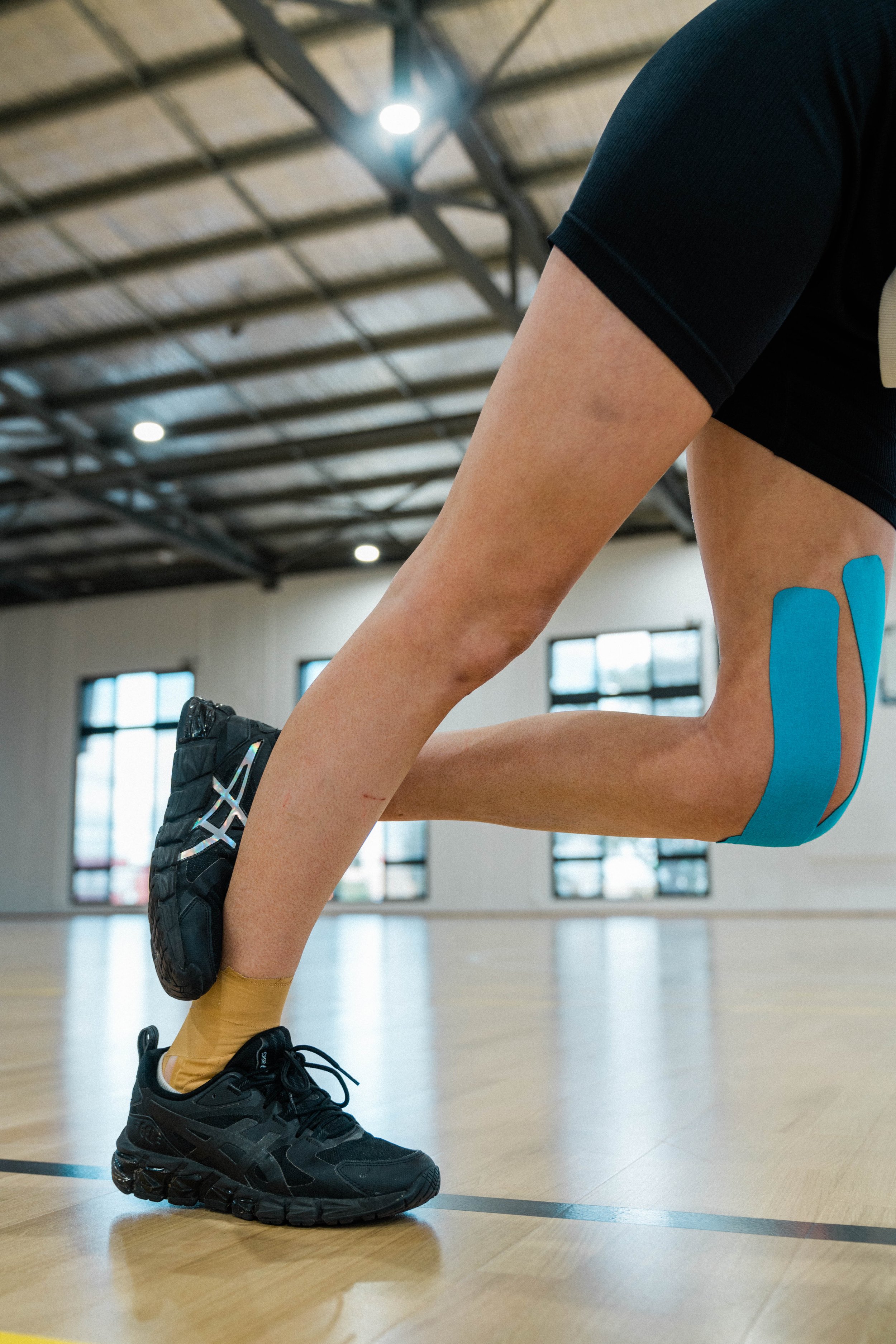Ankle strapping with rigid tape
How to strap your ankle before training or a game, the steps below will help guide you.
How do ankle sprains occur sports?
The ankle joint is at its most unstable position, when you are on the ball of your feet (tie-toe), and with certain forces, this can cause the ligaments in the ankle joint to stretch beyond what it is capable of.
Ankle injuries are common in sports that require running, jumping and change in directions. These sports can include; AFL, Rugby, Netball, Basketball, Soccer etc…
Why would you tape your ankle?
Taping your ankle will not resolve ankle pain, however it can provide feedback to your brain, to tell it where your ankle is positioned. This will allow your body to be mindful of your ankle’s position, to avoid a reoccurrence of injury. It is important to follow healthcare advice to manage your injury, with appropriate rehabilitation, to strength the muscles around your ankle joint and lower limb. Taping is a protective equipment to aid your recovery from injury, it should be relied on to help you return to sports or activities.
Simple steps to strapping an ankle:
1. Measure 4-fingers width above the ankle joint, then apply the first anchor tape.
2. Add 2 x stirrups ‘U’ shape, from ankle-to-ankle
3. Add 2 x 6’s each side of the ankle, loop from inside-out, then outside-in of the ankle. “Looks like a figure 6”
4. (optional) Add Heel-locks for maximum support. Start from top-front of the ankle, then wrap around, then behind the ankle. Then continue underneath the heel, then come back up to the front of the ankle to finish.
5. Finish off, by re-anchoring over STEP 1. This holds any loose ends in neatly.
6. Check for any tightness or cuts (check the capillary re-fill in the toes). Press down firmly on the tape to minimise creases in the tape. This helps to reduce movement through the tape.
7. Test the ankle. Move and walk on it, and see how it feels. The ankle should feel firm, and supported.
TIPS:
· Always check the skin before applying tape
· Look out for any: redness, swelling, bruises, blisters, cuts, burns and other wounds on the skin.
· Seek medical attention if there is active bleeding, or signs of wound not healing.
· Before application; keep skin dry (i.e., no moisturiser or lotion) and reduce hair at the site. This can reduce the effectiveness of the tape to stay on the skin.
· Be in a comfortable position before applying the tape. Often sitting up with an outstretched leg is preferred.
Click this link below to watch the steps:
HEALTH NOTICE: Please note that the tips and advice provided on this website by no means replace medical advice and treatment. If you have, suspect a health problem or if symptoms persist consult a doctor and your healthcare professional.
References: Brukner.p,Khan. K. Clincial Sports Medicine. 4th ed. McGraw Hill Professional. 2014. 8-25p.


